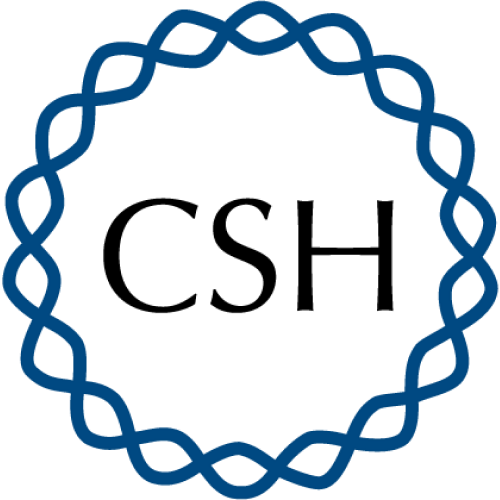Open Access


Structural basis of template strand deoxyuridine promoter recognition by a viral RNA polymerase
Alec Fraser
1
,
Maria L Sokolova
1, 2
,
Arina V Drobysheva
2
,
Julia V Gordeeva
2
,
S. Borukhov
3
,
John M. Jumper
4
,
Konstantin Severinov
2, 5, 6
,
Petr G. Leiman
1
3
Department of Cell Biology and Neuroscience, Rowan University School of Osteopathic Medicine at Stratford, Stratford, USA
|
Publication type: Journal Article
Publication date: 2022-06-20
scimago Q1
wos Q1
SJR: 4.761
CiteScore: 23.4
Impact factor: 15.7
ISSN: 20411723
PubMed ID:
35725571
General Chemistry
General Biochemistry, Genetics and Molecular Biology
Multidisciplinary
General Physics and Astronomy
Abstract
Recognition of promoters in bacterial RNA polymerases (RNAPs) is controlled by sigma subunits. The key sequence motif recognized by the sigma, the −10 promoter element, is located in the non-template strand of the double-stranded DNA molecule ~10 nucleotides upstream of the transcription start site. Here, we explain the mechanism by which the phage AR9 non-virion RNAP (nvRNAP), a bacterial RNAP homolog, recognizes the −10 element of its deoxyuridine-containing promoter in the template strand. The AR9 sigma-like subunit, the nvRNAP enzyme core, and the template strand together form two nucleotide base-accepting pockets whose shapes dictate the requirement for the conserved deoxyuridines. A single amino acid substitution in the AR9 sigma-like subunit allows one of these pockets to accept a thymine thus expanding the promoter consensus. Our work demonstrates the extent to which viruses can evolve host-derived multisubunit enzymes to make transcription of their own genes independent of the host. Promoter recognition is a critical step in the initiation of transcription of DNA to RNA. Here, the authors describe a novel mechanism by which a phage-encoded RNA polymerase recognizes viral promoters containing deoxyuridines instead of thymidines.
Found
Nothing found, try to update filter.
Found
Nothing found, try to update filter.
Top-30
Journals
|
1
|
|
|
bioRxiv
1 publication, 16.67%
|
|
|
Nature Communications
1 publication, 16.67%
|
|
|
Journal of Molecular Biology
1 publication, 16.67%
|
|
|
Journal of Chemical Information and Modeling
1 publication, 16.67%
|
|
|
Journal of Bacteriology
1 publication, 16.67%
|
|
|
1
|
Publishers
|
1
2
|
|
|
Cold Spring Harbor Laboratory
2 publications, 33.33%
|
|
|
Springer Nature
1 publication, 16.67%
|
|
|
Elsevier
1 publication, 16.67%
|
|
|
American Chemical Society (ACS)
1 publication, 16.67%
|
|
|
American Society for Microbiology
1 publication, 16.67%
|
|
|
1
2
|
- We do not take into account publications without a DOI.
- Statistics recalculated weekly.
Are you a researcher?
Create a profile to get free access to personal recommendations for colleagues and new articles.
Metrics
6
Total citations:
6
Citations from 2024:
4
(66.67%)
Cite this
GOST |
RIS |
BibTex
Cite this
GOST
Copy
Fraser A. et al. Structural basis of template strand deoxyuridine promoter recognition by a viral RNA polymerase // Nature Communications. 2022. Vol. 13. No. 1. 3526
GOST all authors (up to 50)
Copy
Fraser A., Sokolova M. L., Drobysheva A. V., Gordeeva J. V., Borukhov S., Jumper J. M., Severinov K., Leiman P. G. Structural basis of template strand deoxyuridine promoter recognition by a viral RNA polymerase // Nature Communications. 2022. Vol. 13. No. 1. 3526
Cite this
RIS
Copy
TY - JOUR
DO - 10.1038/s41467-022-31214-6
UR - https://doi.org/10.1038/s41467-022-31214-6
TI - Structural basis of template strand deoxyuridine promoter recognition by a viral RNA polymerase
T2 - Nature Communications
AU - Fraser, Alec
AU - Sokolova, Maria L
AU - Drobysheva, Arina V
AU - Gordeeva, Julia V
AU - Borukhov, S.
AU - Jumper, John M.
AU - Severinov, Konstantin
AU - Leiman, Petr G.
PY - 2022
DA - 2022/06/20
PB - Springer Nature
IS - 1
VL - 13
PMID - 35725571
SN - 2041-1723
ER -
Cite this
BibTex (up to 50 authors)
Copy
@article{2022_Fraser,
author = {Alec Fraser and Maria L Sokolova and Arina V Drobysheva and Julia V Gordeeva and S. Borukhov and John M. Jumper and Konstantin Severinov and Petr G. Leiman},
title = {Structural basis of template strand deoxyuridine promoter recognition by a viral RNA polymerase},
journal = {Nature Communications},
year = {2022},
volume = {13},
publisher = {Springer Nature},
month = {jun},
url = {https://doi.org/10.1038/s41467-022-31214-6},
number = {1},
pages = {3526},
doi = {10.1038/s41467-022-31214-6}
}






